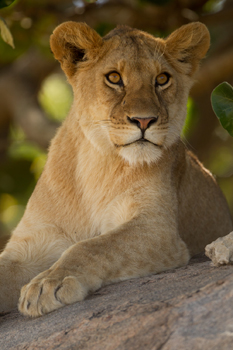
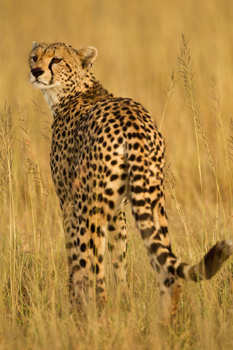
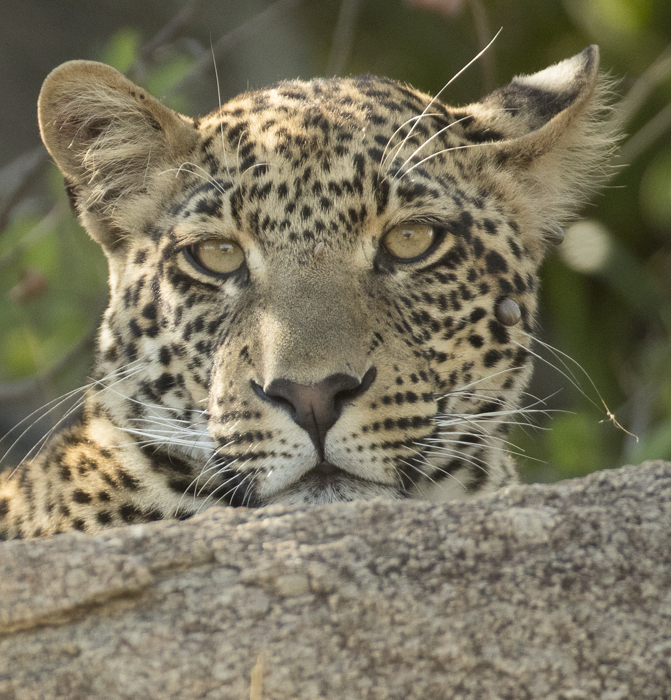
Tanzania
the Northern Serengeti
Ngorongoro Crater
Dates: October 5-15, 2021
Price: $11,695
Optional:
Tarangire Extention including Bat photography
Dates: October 15-18, 2021
Price: $2995
An East African Photo Safari is the experience of a lifetime, but one that often becomes a nearly annual experience for many. We’ve been doing photo safaris for thirty-three years, and we not only know
what we’re doing photographically to deliver the best possible images you can make, but we also offer something few others can. We also provide the story, the natural history, the reasons why something happened, or why it may happen as we wait. We are photographers, of course, but we are also naturalists, biologists by training, and we take enormous pleasure in interpreting and making sense
of the behaviors you will see.
You can go on a safari with a photo leader and take pictures, but there is no other photo safari that will provide you with the information that explains what you are seeing, that gives meaning to your photographs and to your experience. As our participants say, it is what truly sets us apart from all the rest.
The complete brochure below has ALL the details. But here's a quick summation.
Why we are unique
Experience.
33 years leading safaris.
We know the wildlife and how best to utilize your time.
Our rotation system insures you will have the best experience possible.
You are getting two very experienced leaders for the price most tours have for
only one leader, experienced or not.
Why we offer trips in the Fall
The short rainy season has fewer people.
The skies are the most varied, offering the best light for AM and PM shooting.
The babies of Predators are usually present at this time.
The gnu migration is still likely to be present.
Featuring the Best Photographic Locations
We visit three different locations in the northern and Central Serengeti.
Transit days in the Serengeti are game drives- no lost shooting opportunities.
Who is this safari for
Serious photographers and naturalists.
Folks willing to spend time waiting if it is required.
Patient photographers and naturalists.
This safari is not for 'see it and go' tourists!
Our Unique Rotation System
We rotate participants through vehicles, guides, and us.
We avoid cliques.
Participants get maximum time with us as your guides.
What you can expect from us
The most productive safari possible.
Accurate, informative natural history information.
Professional help in your photography - compositions, positioning, exposure.
OLYMPUS Shooters - we'll have a few pro kits along, including the equivalent of 600mm lenses,
for participants to try out and to use.
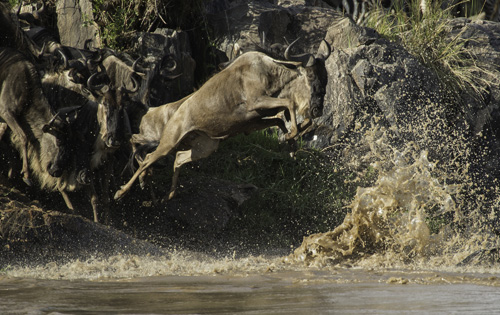



Tanzania
the Northern Serengeti
Ngorongoro Crater
Dates: October 5-15, 2021
Price: $11,695
Optional:
Tarangire Extention including Bat photography
Dates: October 15-18, 2021
Price: $2995
An East African Photo Safari is the experience of a lifetime, but one that often becomes a nearly annual experience for many. We’ve been doing photo safaris for thirty-three years, and we not only know
what we’re doing photographically to deliver the best possible images you can make, but we also offer something few others can. We also provide the story, the natural history, the reasons why something happened, or why it may happen as we wait. We are photographers, of course, but we are also naturalists, biologists by training, and we take enormous pleasure in interpreting and making sense
of the behaviors you will see.
You can go on a safari with a photo leader and take pictures, but there is no other photo safari that will provide you with the information that explains what you are seeing, that gives meaning to your photographs and to your experience. As our participants say, it is what truly sets us apart from all the rest.
The complete brochure below has ALL the details. But here's a quick summation.
Why we are unique
Experience.
33 years leading safaris.
We know the wildlife and how best to utilize your time.
Our rotation system insures you will have the best experience possible.
You are getting two very experienced leaders for the price most tours have for
only one leader, experienced or not.
Why we offer trips in the Fall
The short rainy season has fewer people.
The skies are the most varied, offering the best light for AM and PM shooting.
The babies of Predators are usually present at this time.
The gnu migration is still likely to be present.
Featuring the Best Photographic Locations
We visit three different locations in the northern and Central Serengeti.
Transit days in the Serengeti are game drives- no lost shooting opportunities.
Who is this safari for
Serious photographers and naturalists.
Folks willing to spend time waiting if it is required.
Patient photographers and naturalists.
This safari is not for 'see it and go' tourists!
Our Unique Rotation System
We rotate participants through vehicles, guides, and us.
We avoid cliques.
Participants get maximum time with us as your guides.
What you can expect from us
The most productive safari possible.
Accurate, informative natural history information.
Professional help in your photography - compositions, positioning, exposure.
OLYMPUS Shooters - we'll have a few pro kits along, including the equivalent of 600mm lenses,
for participants to try out and to use.

Tanzania
the Northern Serengeti
Ngorongoro Crater
Dates: October 5-15, 2021
Price: $11,695
Optional:
Tarangire Extention including Bat photography
Dates: October 15-18, 2021
Price: $2995
An East African Photo Safari is the experience of a lifetime, but one that often becomes a nearly annual experience for many. We’ve been doing photo safaris for thirty-three years, and we not only know
what we’re doing photographically to deliver the best possible images you can make, but we also offer something few others can. We also provide the story, the natural history, the reasons why something happened, or why it may happen as we wait. We are photographers, of course, but we are also naturalists, biologists by training, and we take enormous pleasure in interpreting and making sense
of the behaviors you will see.
You can go on a safari with a photo leader and take pictures, but there is no other photo safari that will provide you with the information that explains what you are seeing, that gives meaning to your photographs and to your experience. As our participants say, it is what truly sets us apart from all the rest.
The complete brochure below has ALL the details. But here's a quick summation.
Why we are unique
Experience.
33 years leading safaris.
We know the wildlife and how best to utilize your time.
Our rotation system insures you will have the best experience possible.
You are getting two very experienced leaders for the price most tours have for
only one leader, experienced or not.
Why we offer trips in the Fall
The short rainy season has fewer people.
The skies are the most varied, offering the best light for AM and PM shooting.
The babies of Predators are usually present at this time.
The gnu migration is still likely to be present.
Featuring the Best Photographic Locations
We visit three different locations in the northern and Central Serengeti.
Transit days in the Serengeti are game drives- no lost shooting opportunities.
Who is this safari for
Serious photographers and naturalists.
Folks willing to spend time waiting if it is required.
Patient photographers and naturalists.
This safari is not for 'see it and go' tourists!
Our Unique Rotation System
We rotate participants through vehicles, guides, and us.
We avoid cliques.
Participants get maximum time with us as your guides.
What you can expect from us
The most productive safari possible.
Accurate, informative natural history information.
Professional help in your photography - compositions, positioning, exposure.
OLYMPUS Shooters - we'll have a few pro kits along, including the equivalent of 600mm lenses,
for participants to try out and to use.
Tanzania
the Northern Serengeti
Ngorongoro Crater
Dates: October 5-15, 2021
Price: $11,695
Optional:
Tarangire Extention including Bat photography
Dates: October 15-18, 2021
Price: $2995
An East African Photo Safari is the experience of a lifetime, but one that often becomes a nearly annual experience for many. We’ve been doing photo safaris for thirty-three years, and we not only know
what we’re doing photographically to deliver the best possible images you can make, but we also offer something few others can. We also provide the story, the natural history, the reasons why something happened, or why it may happen as we wait. We are photographers, of course, but we are also naturalists, biologists by training, and we take enormous pleasure in interpreting and making sense
of the behaviors you will see.
You can go on a safari with a photo leader and take pictures, but there is no other photo safari that will provide you with the information that explains what you are seeing, that gives meaning to your photographs and to your experience. As our participants say, it is what truly sets us apart from all the rest.
The complete brochure below has ALL the details. But here's a quick summation.
Why we are unique
Experience.
33 years leading safaris.
We know the wildlife and how best to utilize your time.
Our rotation system insures you will have the best experience possible.
You are getting two very experienced leaders for the price most tours have for
only one leader, experienced or not.
Why we offer trips in the Fall
The short rainy season has fewer people.
The skies are the most varied, offering the best light for AM and PM shooting.
The babies of Predators are usually present at this time.
The gnu migration is still likely to be present.
Featuring the Best Photographic Locations
We visit three different locations in the northern and Central Serengeti.
Transit days in the Serengeti are game drives- no lost shooting opportunities.
Who is this safari for
Serious photographers and naturalists.
Folks willing to spend time waiting if it is required.
Patient photographers and naturalists.
This safari is not for 'see it and go' tourists!
Our Unique Rotation System
We rotate participants through vehicles, guides, and us.
We avoid cliques.
Participants get maximum time with us as your guides.
What you can expect from us
The most productive safari possible.
Accurate, informative natural history information.
Professional help in your photography - compositions, positioning, exposure.
OLYMPUS Shooters - we'll have a few pro kits along, including the equivalent of 600mm lenses,
for participants to try out and to use.

Limited to 10 participants
Check out our
trip reports for more information, too!
An Exclusive Shoot Limited to Ten Photographers
Only three photographers per vehicle
Our Photo Safari Highlights
Three Photographers per vehicle maximum - everyone has a full row, with roof and window shooting
Photo Instruction and Guidance in the Field
Fair and Equal Rotation of Photographers - insuring equal time with Joe and Mary Ann and the Driver-Guides
Quality Time at the Best Game Areas
Quality Time and Patience - You will see all the species but
you will see and photograph behavior too.
Three Locations in the Serengeti - The ONLY safaris covering this much area
The Short Rainy Season - Great skies, fewer tourists, sunny mornings, soft light in the PM
Participant Photo Show - optional sharing of images at an exclusive FB link
Our Interpretation and Expertise - You can rely on our knowledge and experience to help predict
behaviors and photo opportunities
Informal Lunch and Dinner Discussions on What You Saw and what it means
Driver-Guide Tip is included in the tour price
Read our 2016 or 2014 Trip Reports from this trip.
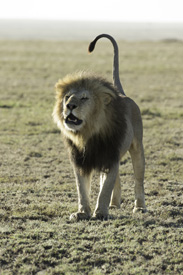
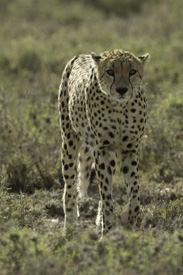
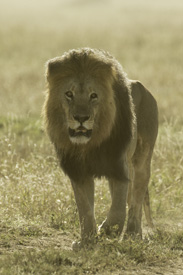
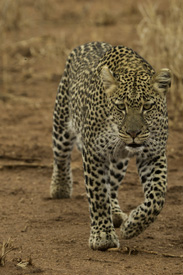
The Northern Serengeti
The name 'Serengeti' is a derivative of a Maasai word for endless plains or endless grasses, and much of the Serengeti is indeed a huge and seemingly limitless vast grassland. One advantage the Northern Serengeti has over neighboring Kenya's southern edge of the Masai Mara is that this area is just one small section of a protected region that extends for scores of miles in either direction. In the Mara, as I pointed out above, there is only a thirty mile width before you are out of the park, and into the increasingly developed countryside. In the Northern Serengeti, you'll drive for nearly an entire day in either direction before reaching the edges of the park. Consequently, there is a lot of game!
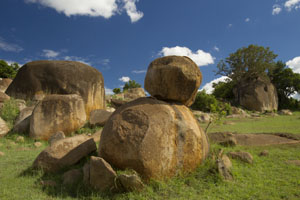
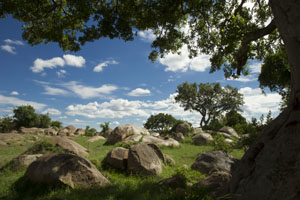
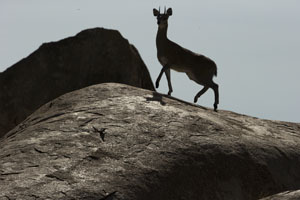
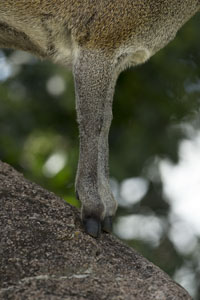 Here in the northern Serengeti we found some of the most beautiful kopjes we've seen anywhere in the Serengeti. In contrast, there are no true kopjes in the Mara, just miles away! In these photogenic rock formations we might find Leopard, Lion, and almost certainly the interesting and delicate antelope, the Klipspringer, which walks along rocks and cliffs, balanced on the tips of its hooves. Black Rhinos are here, and we have a good chance of seeing and photographing Black Rhinos, either here in the Northern Serengeti or in the Ngorongoro Crater.
Here in the northern Serengeti we found some of the most beautiful kopjes we've seen anywhere in the Serengeti. In contrast, there are no true kopjes in the Mara, just miles away! In these photogenic rock formations we might find Leopard, Lion, and almost certainly the interesting and delicate antelope, the Klipspringer, which walks along rocks and cliffs, balanced on the tips of its hooves. Black Rhinos are here, and we have a good chance of seeing and photographing Black Rhinos, either here in the Northern Serengeti or in the Ngorongoro Crater.
The Wildebeest or Gnu migration should be in the area, perhaps traveling north to cross the Mara River or doing just the opposite, and moving south. It is impossible to say, although 'normally,' historically, the Gnus moved north into the Masai Mara in late June or July, and started heading south out of the area in September or October. Over the years, however, we've seen the plains of the Mara empty in October and crowded with Gnus a month later. Gnus follow the rains, at least to an extent, but eventually most move south to be at their birthing grounds in the southern Serengeti by February. If the Gnus are here, we'll have a great chance at photographing them at several different crossing points.
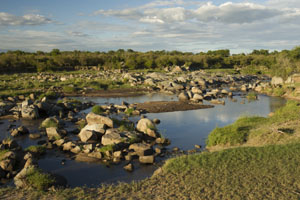
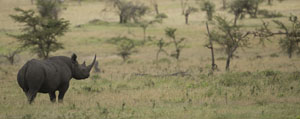
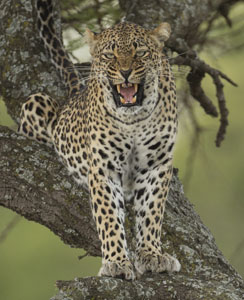
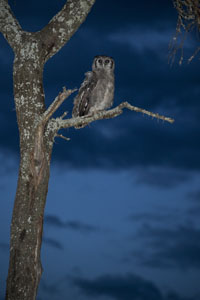
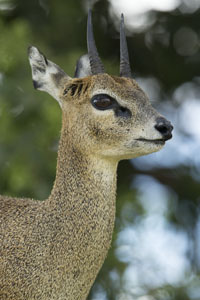
Mara River, from the Tanzania side; endangered Black Rhino;
an angry Leopard; Verreaux's Eagle Owl on the night game drive;
Klipspringer.
We'll travel from the northern Serengeti and the Mara River area to the central Serengeti, in the heart of the vast grasslands and where some of our favorite kopjes dot the land. Lion prides, cheetahs, leopards, and a wide variety of plains game and birds inhabit this area.
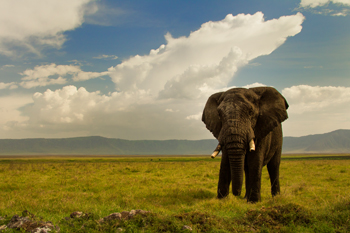
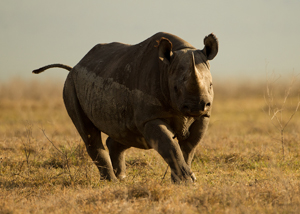
The Ngorongoro Crater
From the Serengeti we'll drive to the world famous Ngorongoro Crater, one of the wonders of the world, which never fails to amaze. Wildlife here is among the most habituated and accessible in all of East Africa, with some of the largest tusker bull elephants, a healthy black rhino population, and a variety of birds and mammals. We'll spend an afternoon game drive and one full day in the Crater, where we should have luck with these great Elephants, as well as the variety of plains game and birds. Spotted Hyenas, Lions, Servals, Hippos, various birds of prey, and more, the Crater offers plenty of subjects.
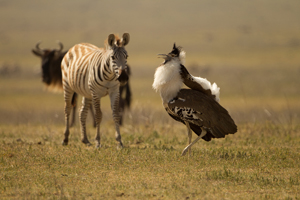
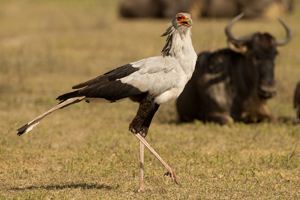
Kori Bustard in display; Secretarybird
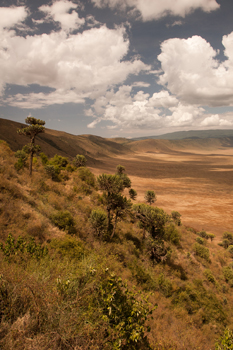
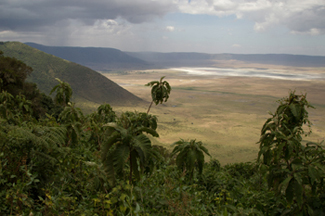
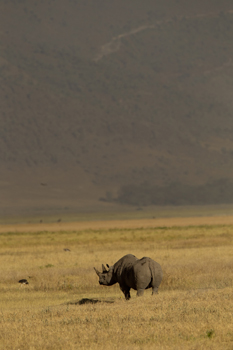
Views from the Crater Rim and inside the Crater, with a Black Rhino.
Tarangire - Optional Extension
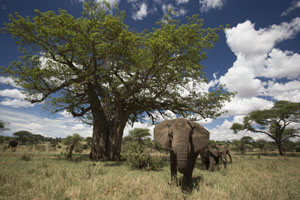 For those who wish to extend their stay, we're offering an optional Tarangire National Park, which will offer completely different and unique scenery of massive baobob trees, great elephant herds, and much more. Tarangire is a dry habitat, quite unlike the lush grasslands of the other locations, and with it the park offers an entirely new set of photographic opportunities. Elephants are common, and with the Baobob trees there are wonderful shooting opportunities.
For those who wish to extend their stay, we're offering an optional Tarangire National Park, which will offer completely different and unique scenery of massive baobob trees, great elephant herds, and much more. Tarangire is a dry habitat, quite unlike the lush grasslands of the other locations, and with it the park offers an entirely new set of photographic opportunities. Elephants are common, and with the Baobob trees there are wonderful shooting opportunities.
While in Tarangire you'll have the opportunity to photograph bats in flight -- something I believe no other safari offers. We supply the necessary gear, all you need is a tripod (a must) and your camera and lens. You'll come away with incredible shots. See below:
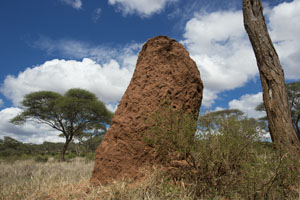
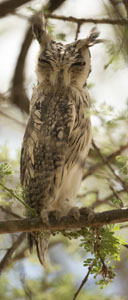
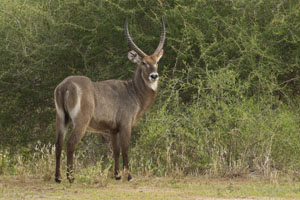
Termite mound, Tarangire; Scops Owl; Common Waterbuck
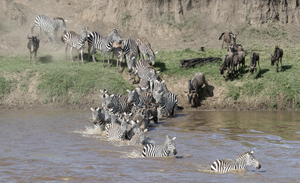
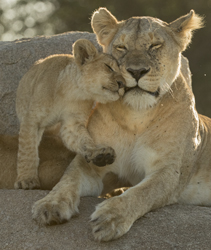
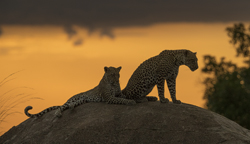
Zebras crossing Mara River; Lion family on kopje; Leopards at sunset
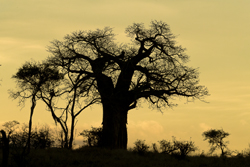
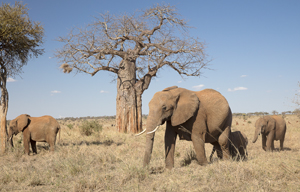
Baobob at Tarangire; Elephant family at Tarangire
The Bat Shoot
I'll be setting up a Range IR to trip our flashes as scores or hundreds of bats fly out of the Baobob tree where they roost during the day. You, the participant, will have your camera and lens on a tripod, aimed and focused at the target point, and fire away, remotely, perhaps while you are having diner! During the two days of this extension we'll be in the field in Tarangire, photographing the wildlife and birds, and hopefully tracking down the Wild Dogs, and in the evening, for an hour or two, you'll be shooting bats. With two days of shooting you'll have a chance to refine compositions or camera placement, giving you some extraordinary images to complete your Tanzania portfolio.
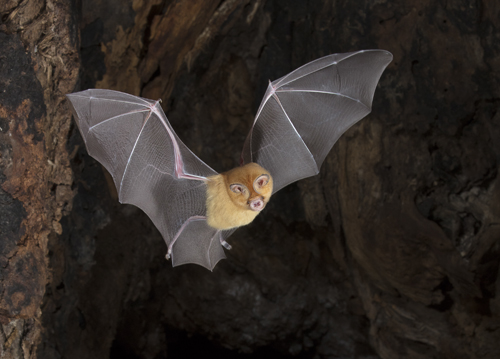
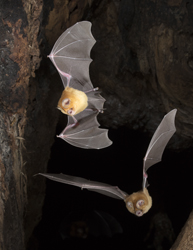
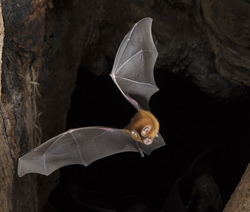
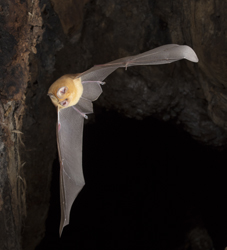
Our Lodging and Our Vehicles: This is a luxury trip, not because we're spoiling ourselves or you, but because it truly is the only way to go and to be comfortable.
The luxury camps are fantastic. That statement is really an understatement, as the camp staff is simply wonderful, the food exquisite, and the accommodations great. People simply hate leaving the camp, and feel that that experience was truly as close to experiencing the sense of 'an African safari' as one could possibly 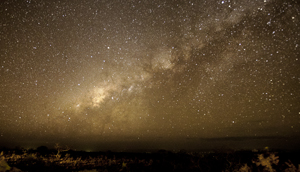 have. These permanent tented camps have real beds, flush toilets, hot showers, and all the amenities are there - it is comfortable and pleasant, and a real reward at the end of the day. You'll love them!
have. These permanent tented camps have real beds, flush toilets, hot showers, and all the amenities are there - it is comfortable and pleasant, and a real reward at the end of the day. You'll love them!
On the road, our vehicles have coolers with BOTTLED WATER, as well as soft drinks, and our field meals were great. Our camp dinners, at night, are superb, and are usually preceded by a group get-together at a campfire where we review the day and enjoy the African night skies and haunting calls of hyenas and lions.
What is included:
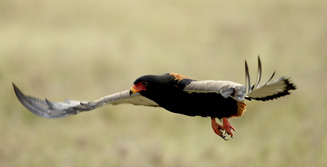
The price of the trip is based upon double occupancy, from Arusha and includes: all accommodations, including the three fabulous luxury tented camps; all park and camping fees; all special permit fees; Flying Doctors membership; internal Air Flights (to our first camp in the Northern Serengeti); all meals; bottled water and soft drinks while on game drives; unlimited water, soft drinks and laundry in the luxury mobile camp. What's not included: items of a personal nature; drinks, alcoholic beverages and laundry at the camps or lodges; alcoholic beverages; international airfare to and from Arusha; and any single supplement.
About Your Leaders
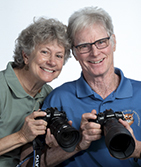 My wife Mary Ann and I strive to provide the most comfortable and thorough safari you will experience. Both Mary and I are professional photographers, and I'd hope you've seen our credits. These included National Geographic, National Wildlife, Ranger Rick, Natural History, Living Bird, Birder's World, and most nature/wildlife calendars.
My wife Mary Ann and I strive to provide the most comfortable and thorough safari you will experience. Both Mary and I are professional photographers, and I'd hope you've seen our credits. These included National Geographic, National Wildlife, Ranger Rick, Natural History, Living Bird, Birder's World, and most nature/wildlife calendars.
As a husband/wife team, Mary Ann and I have won more times in the prestigious BBC Wildlife Photographer of the Year competition than any other husband/wife team. To date we have had 15 firsts, seconds, or thirds -- and we have not entered every year. Our trips are not about us, however, they are all for you, but credentials seem to matter, and we have them.
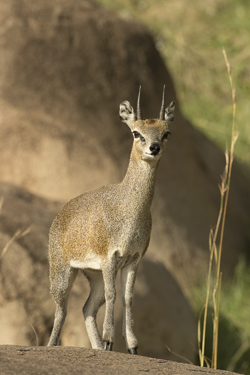 Mary has written twenty-nine (29) children's books, including Leopards, Grizzly Bears, Woodpeckers, Flying Squirrels, Sunflowers, Cobras, Jupiter, Boas, Garter Snakes, Pythons, Rattlesnakes, Ducks, Chickens, Horses, and Cows, and a coffee table book, Out of the Past, Amish Tradition and Faith.
Mary has written twenty-nine (29) children's books, including Leopards, Grizzly Bears, Woodpeckers, Flying Squirrels, Sunflowers, Cobras, Jupiter, Boas, Garter Snakes, Pythons, Rattlesnakes, Ducks, Chickens, Horses, and Cows, and a coffee table book, Out of the Past, Amish Tradition and Faith.
I've written several how-to wildlife photography books -- A Practical Guide to Photographing American Wildlife, The Wildlife Photographer's Field Manual, The Complete Guide to Wildlife Photography, Designing Wildlife Photographs, Photographing on Safari, A Field Guide to Photographing in East Africa, and the New Complete Guide to Wildlife Photography, African Wildlife, Creatures of the Night, The World's Deadliest, and several ebooks. We have produced an instructional video, A Video Guide to Photographing on Safari with Joe and Mary Ann McDonald.
Joe's latest books include Polar Bears in the Wild, Penguins in the Wild,
Big Cats in the Wild, and Gorillas in the Wild.
We are both editors for Nature Photographer magazine.
In addition to leading our trips to Tanzania, Mary and I personally lead photo safaris to Kenya, Brazil's Pantanal, Chile, Galapagos, Svalbard, India, Alaska, Rwanda, Yellowstone, Ecuador, Costa Rica, the Falklands, Antarctica, South Texas, Arizona, and some other spots, too!
Email:info@hoothollow.com
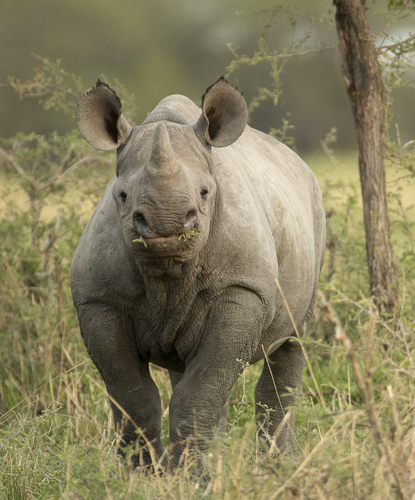
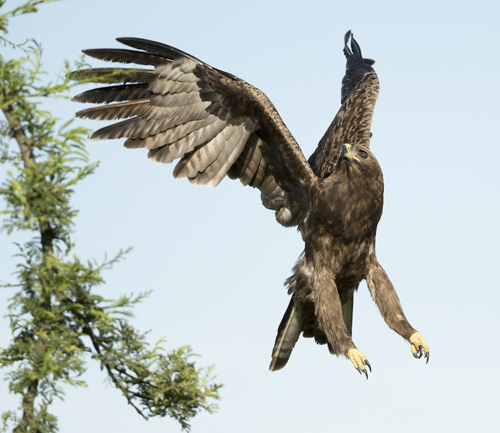
Phone: 717-543-6423
Return to Home Page
Our Photo Safari Highlights
Three Photographers per vehicle maximum - everyone has a full row, with roof and window shooting
Photo Instruction and Guidance in the Field
Fair and Equal Rotation of Photographers - insuring equal time with Joe and Mary Ann and the Driver-Guides
Quality Time at the Best Game Areas
Quality Time and Patience - You will see all the species but
you will see and photograph behavior too.
Three Locations in the Serengeti - The ONLY safaris covering this much area
The Short Rainy Season - Great skies, fewer tourists, sunny mornings, soft light in the PM
Participant Photo Show - optional sharing of images at an exclusive FB link
Our Interpretation and Expertise - You can rely on our knowledge and experience to help predict
behaviors and photo opportunities
Informal Lunch and Dinner Discussions on What You Saw and what it means
Driver-Guide Tip is included in the tour price
Read our 2016 or 2014 Trip Reports from this trip.




The Northern Serengeti
The name 'Serengeti' is a derivative of a Maasai word for endless plains or endless grasses, and much of the Serengeti is indeed a huge and seemingly limitless vast grassland. One advantage the Northern Serengeti has over neighboring Kenya's southern edge of the Masai Mara is that this area is just one small section of a protected region that extends for scores of miles in either direction. In the Mara, as I pointed out above, there is only a thirty mile width before you are out of the park, and into the increasingly developed countryside. In the Northern Serengeti, you'll drive for nearly an entire day in either direction before reaching the edges of the park. Consequently, there is a lot of game!



 Here in the northern Serengeti we found some of the most beautiful kopjes we've seen anywhere in the Serengeti. In contrast, there are no true kopjes in the Mara, just miles away! In these photogenic rock formations we might find Leopard, Lion, and almost certainly the interesting and delicate antelope, the Klipspringer, which walks along rocks and cliffs, balanced on the tips of its hooves. Black Rhinos are here, and we have a good chance of seeing and photographing Black Rhinos, either here in the Northern Serengeti or in the Ngorongoro Crater.
Here in the northern Serengeti we found some of the most beautiful kopjes we've seen anywhere in the Serengeti. In contrast, there are no true kopjes in the Mara, just miles away! In these photogenic rock formations we might find Leopard, Lion, and almost certainly the interesting and delicate antelope, the Klipspringer, which walks along rocks and cliffs, balanced on the tips of its hooves. Black Rhinos are here, and we have a good chance of seeing and photographing Black Rhinos, either here in the Northern Serengeti or in the Ngorongoro Crater.
The Wildebeest or Gnu migration should be in the area, perhaps traveling north to cross the Mara River or doing just the opposite, and moving south. It is impossible to say, although 'normally,' historically, the Gnus moved north into the Masai Mara in late June or July, and started heading south out of the area in September or October. Over the years, however, we've seen the plains of the Mara empty in October and crowded with Gnus a month later. Gnus follow the rains, at least to an extent, but eventually most move south to be at their birthing grounds in the southern Serengeti by February. If the Gnus are here, we'll have a great chance at photographing them at several different crossing points.





Mara River, from the Tanzania side; endangered Black Rhino;
an angry Leopard; Verreaux's Eagle Owl on the night game drive;
Klipspringer.
We'll travel from the northern Serengeti and the Mara River area to the central Serengeti, in the heart of the vast grasslands and where some of our favorite kopjes dot the land. Lion prides, cheetahs, leopards, and a wide variety of plains game and birds inhabit this area.


The Ngorongoro Crater
From the Serengeti we'll drive to the world famous Ngorongoro Crater, one of the wonders of the world, which never fails to amaze. Wildlife here is among the most habituated and accessible in all of East Africa, with some of the largest tusker bull elephants, a healthy black rhino population, and a variety of birds and mammals. We'll spend an afternoon game drive and one full day in the Crater, where we should have luck with these great Elephants, as well as the variety of plains game and birds. Spotted Hyenas, Lions, Servals, Hippos, various birds of prey, and more, the Crater offers plenty of subjects.


Kori Bustard in display; Secretarybird



Views from the Crater Rim and inside the Crater, with a Black Rhino.
Tarangire - Optional Extension
 For those who wish to extend their stay, we're offering an optional Tarangire National Park, which will offer completely different and unique scenery of massive baobob trees, great elephant herds, and much more. Tarangire is a dry habitat, quite unlike the lush grasslands of the other locations, and with it the park offers an entirely new set of photographic opportunities. Elephants are common, and with the Baobob trees there are wonderful shooting opportunities.
For those who wish to extend their stay, we're offering an optional Tarangire National Park, which will offer completely different and unique scenery of massive baobob trees, great elephant herds, and much more. Tarangire is a dry habitat, quite unlike the lush grasslands of the other locations, and with it the park offers an entirely new set of photographic opportunities. Elephants are common, and with the Baobob trees there are wonderful shooting opportunities.
While in Tarangire you'll have the opportunity to photograph bats in flight -- something I believe no other safari offers. We supply the necessary gear, all you need is a tripod (a must) and your camera and lens. You'll come away with incredible shots. See below:



Termite mound, Tarangire; Scops Owl; Common Waterbuck



Zebras crossing Mara River; Lion family on kopje; Leopards at sunset


Baobob at Tarangire; Elephant family at Tarangire
The Bat Shoot
I'll be setting up a Range IR to trip our flashes as scores or hundreds of bats fly out of the Baobob tree where they roost during the day. You, the participant, will have your camera and lens on a tripod, aimed and focused at the target point, and fire away, remotely, perhaps while you are having diner! During the two days of this extension we'll be in the field in Tarangire, photographing the wildlife and birds, and hopefully tracking down the Wild Dogs, and in the evening, for an hour or two, you'll be shooting bats. With two days of shooting you'll have a chance to refine compositions or camera placement, giving you some extraordinary images to complete your Tanzania portfolio.




Our Lodging and Our Vehicles: This is a luxury trip, not because we're spoiling ourselves or you, but because it truly is the only way to go and to be comfortable.
The luxury camps are fantastic. That statement is really an understatement, as the camp staff is simply wonderful, the food exquisite, and the accommodations great. People simply hate leaving the camp, and feel that that experience was truly as close to experiencing the sense of 'an African safari' as one could possibly  have. These permanent tented camps have real beds, flush toilets, hot showers, and all the amenities are there - it is comfortable and pleasant, and a real reward at the end of the day. You'll love them!
have. These permanent tented camps have real beds, flush toilets, hot showers, and all the amenities are there - it is comfortable and pleasant, and a real reward at the end of the day. You'll love them!
On the road, our vehicles have coolers with BOTTLED WATER, as well as soft drinks, and our field meals were great. Our camp dinners, at night, are superb, and are usually preceded by a group get-together at a campfire where we review the day and enjoy the African night skies and haunting calls of hyenas and lions.
What is included:

The price of the trip is based upon double occupancy, from Arusha and includes: all accommodations, including the three fabulous luxury tented camps; all park and camping fees; all special permit fees; Flying Doctors membership; internal Air Flights (to our first camp in the Northern Serengeti); all meals; bottled water and soft drinks while on game drives; unlimited water, soft drinks and laundry in the luxury mobile camp. What's not included: items of a personal nature; drinks, alcoholic beverages and laundry at the camps or lodges; alcoholic beverages; international airfare to and from Arusha; and any single supplement.
About Your Leaders
 My wife Mary Ann and I strive to provide the most comfortable and thorough safari you will experience. Both Mary and I are professional photographers, and I'd hope you've seen our credits. These included National Geographic, National Wildlife, Ranger Rick, Natural History, Living Bird, Birder's World, and most nature/wildlife calendars.
My wife Mary Ann and I strive to provide the most comfortable and thorough safari you will experience. Both Mary and I are professional photographers, and I'd hope you've seen our credits. These included National Geographic, National Wildlife, Ranger Rick, Natural History, Living Bird, Birder's World, and most nature/wildlife calendars.
As a husband/wife team, Mary Ann and I have won more times in the prestigious BBC Wildlife Photographer of the Year competition than any other husband/wife team. To date we have had 15 firsts, seconds, or thirds -- and we have not entered every year. Our trips are not about us, however, they are all for you, but credentials seem to matter, and we have them.
 Mary has written twenty-nine (29) children's books, including Leopards, Grizzly Bears, Woodpeckers, Flying Squirrels, Sunflowers, Cobras, Jupiter, Boas, Garter Snakes, Pythons, Rattlesnakes, Ducks, Chickens, Horses, and Cows, and a coffee table book, Out of the Past, Amish Tradition and Faith.
Mary has written twenty-nine (29) children's books, including Leopards, Grizzly Bears, Woodpeckers, Flying Squirrels, Sunflowers, Cobras, Jupiter, Boas, Garter Snakes, Pythons, Rattlesnakes, Ducks, Chickens, Horses, and Cows, and a coffee table book, Out of the Past, Amish Tradition and Faith.
I've written several how-to wildlife photography books -- A Practical Guide to Photographing American Wildlife, The Wildlife Photographer's Field Manual, The Complete Guide to Wildlife Photography, Designing Wildlife Photographs, Photographing on Safari, A Field Guide to Photographing in East Africa, and the New Complete Guide to Wildlife Photography, African Wildlife, Creatures of the Night, The World's Deadliest, and several ebooks. We have produced an instructional video, A Video Guide to Photographing on Safari with Joe and Mary Ann McDonald.
Joe's latest books include Polar Bears in the Wild, Penguins in the Wild,
Big Cats in the Wild, and Gorillas in the Wild.
We are both editors for Nature Photographer magazine.
In addition to leading our trips to Tanzania, Mary and I personally lead photo safaris to Kenya, Brazil's Pantanal, Chile, Galapagos, Svalbard, India, Alaska, Rwanda, Yellowstone, Ecuador, Costa Rica, the Falklands, Antarctica, South Texas, Arizona, and some other spots, too!
Email:info@hoothollow.com


Phone: 717-543-6423
Return to Home Page
Our Photo Safari Highlights
Three Photographers per vehicle maximum - everyone has a full row, with roof and window shooting
Photo Instruction and Guidance in the Field
Fair and Equal Rotation of Photographers - insuring equal time with Joe and Mary Ann and the Driver-Guides
Quality Time at the Best Game Areas
Quality Time and Patience - You will see all the species but
you will see and photograph behavior too.
Three Locations in the Serengeti - The ONLY safaris covering this much area
The Short Rainy Season - Great skies, fewer tourists, sunny mornings, soft light in the PM
Participant Photo Show - optional sharing of images at an exclusive FB link
Our Interpretation and Expertise - You can rely on our knowledge and experience to help predict
behaviors and photo opportunities
Informal Lunch and Dinner Discussions on What You Saw and what it means
Driver-Guide Tip is included in the tour price
Read our 2016 or 2014 Trip Reports from this trip.




The Northern Serengeti
The name 'Serengeti' is a derivative of a Maasai word for endless plains or endless grasses, and much of the Serengeti is indeed a huge and seemingly limitless vast grassland. One advantage the Northern Serengeti has over neighboring Kenya's southern edge of the Masai Mara is that this area is just one small section of a protected region that extends for scores of miles in either direction. In the Mara, as I pointed out above, there is only a thirty mile width before you are out of the park, and into the increasingly developed countryside. In the Northern Serengeti, you'll drive for nearly an entire day in either direction before reaching the edges of the park. Consequently, there is a lot of game!



 Here in the northern Serengeti we found some of the most beautiful kopjes we've seen anywhere in the Serengeti. In contrast, there are no true kopjes in the Mara, just miles away! In these photogenic rock formations we might find Leopard, Lion, and almost certainly the interesting and delicate antelope, the Klipspringer, which walks along rocks and cliffs, balanced on the tips of its hooves. Black Rhinos are here, and we have a good chance of seeing and photographing Black Rhinos, either here in the Northern Serengeti or in the Ngorongoro Crater.
Here in the northern Serengeti we found some of the most beautiful kopjes we've seen anywhere in the Serengeti. In contrast, there are no true kopjes in the Mara, just miles away! In these photogenic rock formations we might find Leopard, Lion, and almost certainly the interesting and delicate antelope, the Klipspringer, which walks along rocks and cliffs, balanced on the tips of its hooves. Black Rhinos are here, and we have a good chance of seeing and photographing Black Rhinos, either here in the Northern Serengeti or in the Ngorongoro Crater.
The Wildebeest or Gnu migration should be in the area, perhaps traveling north to cross the Mara River or doing just the opposite, and moving south. It is impossible to say, although 'normally,' historically, the Gnus moved north into the Masai Mara in late June or July, and started heading south out of the area in September or October. Over the years, however, we've seen the plains of the Mara empty in October and crowded with Gnus a month later. Gnus follow the rains, at least to an extent, but eventually most move south to be at their birthing grounds in the southern Serengeti by February. If the Gnus are here, we'll have a great chance at photographing them at several different crossing points.





Mara River, from the Tanzania side; endangered Black Rhino;
an angry Leopard; Verreaux's Eagle Owl on the night game drive;
Klipspringer.
We'll travel from the northern Serengeti and the Mara River area to the central Serengeti, in the heart of the vast grasslands and where some of our favorite kopjes dot the land. Lion prides, cheetahs, leopards, and a wide variety of plains game and birds inhabit this area.


The Ngorongoro Crater
From the Serengeti we'll drive to the world famous Ngorongoro Crater, one of the wonders of the world, which never fails to amaze. Wildlife here is among the most habituated and accessible in all of East Africa, with some of the largest tusker bull elephants, a healthy black rhino population, and a variety of birds and mammals. We'll spend an afternoon game drive and one full day in the Crater, where we should have luck with these great Elephants, as well as the variety of plains game and birds. Spotted Hyenas, Lions, Servals, Hippos, various birds of prey, and more, the Crater offers plenty of subjects.


Kori Bustard in display; Secretarybird



Views from the Crater Rim and inside the Crater, with a Black Rhino.
Tarangire - Optional Extension
 For those who wish to extend their stay, we're offering an optional Tarangire National Park, which will offer completely different and unique scenery of massive baobob trees, great elephant herds, and much more. Tarangire is a dry habitat, quite unlike the lush grasslands of the other locations, and with it the park offers an entirely new set of photographic opportunities. Elephants are common, and with the Baobob trees there are wonderful shooting opportunities.
For those who wish to extend their stay, we're offering an optional Tarangire National Park, which will offer completely different and unique scenery of massive baobob trees, great elephant herds, and much more. Tarangire is a dry habitat, quite unlike the lush grasslands of the other locations, and with it the park offers an entirely new set of photographic opportunities. Elephants are common, and with the Baobob trees there are wonderful shooting opportunities.
While in Tarangire you'll have the opportunity to photograph bats in flight -- something I believe no other safari offers. We supply the necessary gear, all you need is a tripod (a must) and your camera and lens. You'll come away with incredible shots. See below:



Termite mound, Tarangire; Scops Owl; Common Waterbuck



Zebras crossing Mara River; Lion family on kopje; Leopards at sunset


Baobob at Tarangire; Elephant family at Tarangire
The Bat Shoot
I'll be setting up a Range IR to trip our flashes as scores or hundreds of bats fly out of the Baobob tree where they roost during the day. You, the participant, will have your camera and lens on a tripod, aimed and focused at the target point, and fire away, remotely, perhaps while you are having diner! During the two days of this extension we'll be in the field in Tarangire, photographing the wildlife and birds, and hopefully tracking down the Wild Dogs, and in the evening, for an hour or two, you'll be shooting bats. With two days of shooting you'll have a chance to refine compositions or camera placement, giving you some extraordinary images to complete your Tanzania portfolio.




Our Lodging and Our Vehicles: This is a luxury trip, not because we're spoiling ourselves or you, but because it truly is the only way to go and to be comfortable.
The luxury camps are fantastic. That statement is really an understatement, as the camp staff is simply wonderful, the food exquisite, and the accommodations great. People simply hate leaving the camp, and feel that that experience was truly as close to experiencing the sense of 'an African safari' as one could possiblyhave. These permanent tented camps have real beds, flush toilets, hot showers, and all the amenities are there - it is comfortable and pleasant, and a real reward at the end of the day. You'll love them!
On the road, our vehicles have coolers with BOTTLED WATER, as well as soft drinks, and our field meals were great. Our camp dinners, at night, are superb, and are usually preceded by a group get-together at a campfire where we review the day and enjoy the African night skies and haunting calls of hyenas and lions.
The price of the trip is based upon double occupancy, from Arusha and includes: all accommodations, including the three fabulous luxury tented camps; all park and camping fees; all special permit fees; Flying Doctors membership; internal Air Flights (to our first camp in the Northern Serengeti); all meals; bottled water and soft drinks while on game drives; unlimited water, soft drinks and laundry in the luxury mobile camp. What's not included: items of a personal nature; drinks, alcoholic beverages and laundry at the camps or lodges; alcoholic beverages; international airfare to and from Arusha; and any single supplement.About Your Leaders
My wife Mary Ann and I strive to provide the most comfortable and thorough safari you will experience. Both Mary and I are professional photographers, and I'd hope you've seen our credits. These included National Geographic, National Wildlife, Ranger Rick, Natural History, Living Bird, Birder's World, and most nature/wildlife calendars.
As a husband/wife team, Mary Ann and I have won more times in the prestigious BBC Wildlife Photographer of the Year competition than any other husband/wife team. To date we have had 15 firsts, seconds, or thirds -- and we have not entered every year. Our trips are not about us, however, they are all for you, but credentials seem to matter, and we have them.
Mary has written twenty-nine (29) children's books, including Leopards, Grizzly Bears, Woodpeckers, Flying Squirrels, Sunflowers, Cobras, Jupiter, Boas, Garter Snakes, Pythons, Rattlesnakes, Ducks, Chickens, Horses, and Cows, and a coffee table book, Out of the Past, Amish Tradition and Faith.
I've written several how-to wildlife photography books -- A Practical Guide to Photographing American Wildlife, The Wildlife Photographer's Field Manual, The Complete Guide to Wildlife Photography, Designing Wildlife Photographs, Photographing on Safari, A Field Guide to Photographing in East Africa, and the New Complete Guide to Wildlife Photography, African Wildlife, Creatures of the Night, The World's Deadliest, and several ebooks. We have produced an instructional video, A Video Guide to Photographing on Safari with Joe and Mary Ann McDonald.
Joe's latest books include Polar Bears in the Wild, Penguins in the Wild,
Big Cats in the Wild, and Gorillas in the Wild.
We are both editors for Nature Photographer magazine.
In addition to leading our trips to Tanzania, Mary and I personally lead photo safaris to Kenya, Brazil's Pantanal, Chile, Galapagos, Svalbard, India, Alaska, Rwanda, Yellowstone, Ecuador, Costa Rica, the Falklands, Antarctica, South Texas, Arizona, and some other spots, too!


Phone: 717-543-6423


